Cambridge Healthtech Institute ’s Inaugural
Gene Therapy CMC and Manufacturing
20-21 March 2019
The vector-based gene therapy industry has undergone rapid advances over the last twelve months and shows no sign of slowing down. The clinical results are beyond encouraging. However, the pressure is now on CMC, analytical, process development and manufacturing
department to produce these therapies at scale.
The Gene Therapy CMC and Bioproduction conference examines the practical challenges facing the production, characterization and quality control of vector-based gene therapies, with dedicated sessions on AAV and lentivirus-based platforms as well as oncolytic
viruses, CRISPR and other gene editing therapies. Topics include new and emerging analytical strategies, upcoming regulations and the latest manufacturing strategies for large- and small-scale production.
Final Agenda
Wednesday, 20 March
10:00 Registration Open
10:30 Coffee Break in the Exhibit Hall with Poster Viewing
11:15 Chairperson’s Remarks
Manuel Carrondo, PhD, Professor of Chemical and Biochemical Engineering, FCT-UNL; Vice President, IBET
11:20 Bioprocessing Innovations in the Era of Clinical Acceleration and Process Intensification

Stefanos Grammatikos, PhD, Vice President, Head, Biotech Sciences, UCB Pharma
Current trends in clinical development acceleration and bioprocess intensification impose an unprecedented compression of CMC development timelines and new bioprocessing challenges downstream of the cell culture bioreactor. In this talk I will present
a series of innovations we have introduced, some incremental and some potentially disruptive, in an effort to avoid further complications while rising to the latest challenges of bio CMC development and bioprocessing.
11:50 Opportunities and Challenges in CAR T Manufacturing
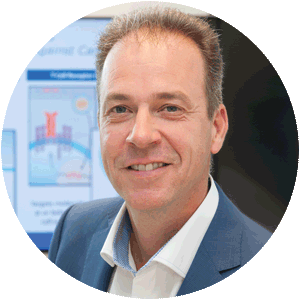
Markwin Velders, PhD, Vice President, Operations, Managing Director, Kite Pharma EU B.V.
Update on the status of CAR-T development for use in the treatment of cancer. The success story of this paradigm shift and the challenges and opportunities that lay ahead for this therapy will be presented and discussed.
12:20 Session Break
12:30 Bridging Luncheon Presentation (Sponsorship Opportunity Available) or Enjoy Lunch on Your Own
13:00 Session Break
13:40 Chairperson’s Opening Remarks
 Christine Le Bec, PhD, Head of CMC Analytical, Technology Development, Genethon
Christine Le Bec, PhD, Head of CMC Analytical, Technology Development, Genethon
13:45 KEYNOTE PRESENTATION: LUXTURNA (voretigene neparvovec): From Clinical Development to FDA Approval
 Dan Takefman, PhD, Head, Regulatory Affairs, Spark Therapeutics
Dan Takefman, PhD, Head, Regulatory Affairs, Spark Therapeutics
14:15 Viral Vector Manufacturing and Control: Regulatory Considerations and Challenges
 Matthias Renner, PhD, Scientist, Federal Institute
for Vaccines and Biomedicines, Paul Ehrlich Institute
Matthias Renner, PhD, Scientist, Federal Institute
for Vaccines and Biomedicines, Paul Ehrlich Institute
In respect to manufacturing and quality control, viral vectors are considered to be one of the most complex medicinal products. Regulatory aspects considering the fundamental steps in manufacturing and control of these medicinal products will be presented,
and the regulatory framework for these products which are classified in the EU as advanced therapy medicinal products and are regulated centrally by the European Commission and the European Medicines Agency will be given.
14:45 Understanding the Effect of Post-Translational Modifications of AAV Capsid Proteins and their Impact on AAV Infectivity
 Lin Liu, PhD, Principal Scientist, Bioanalytics
Characterization, Biologics Development, Sanofi
Lin Liu, PhD, Principal Scientist, Bioanalytics
Characterization, Biologics Development, Sanofi
Viral capsid proteins play an important role in cellular targeting and trafficking as part of the viral infection cycle, and thus any changes in the viral capsid protein sequence or post-translational modifications (PTMs) might impact viral targeting
and infectivity. We evaluated the role of AAV capsid protein PTMs on AAV transduction potential by generating AAV2 and AAV5 capsid mutants and performing a stress study.
15:15 Analysis of Purity and Packaging of Gene Therapy Vectors and VLPs to Support Process Development Decisions
Vanessa Carvalho, Senior Scientist, Electron Microscopy Services, Vironova
Challenges with scale up of gene therapy processes include surprises in purity profiles. Robust analytical solutions are required to avoid late surprises. Transmission electron microscopy (TEM) provide unmatched insights in characterization of viral
gene vectors. MiniTEM automatically provides: comparative metrics on purity profiles of viral particle samples; automatically differentiates intact viral particles from process related impurities; correlation between potency and viral particle
morphology.
15:45 Refreshment Break in the Exhibit Hall with Poster Viewing
16:25 Analytical Approaches to Characterize AAV Gene Therapy Products
 Christine Le Bec, PhD, Head, CMC Analytical, Technology Development, Genethon
Christine Le Bec, PhD, Head, CMC Analytical, Technology Development, Genethon
In recent years, AAV vectors have been increasingly evaluated in various gene therapy clinical trials. To sustain this, reliable, fast, robust, GMP compliant analytical methods and characterization protocols are needed. Specific analytical assays
were performed to assess vector productivity, vector purity, potency and safety. I will present different methods to quantify host cell DNA and host cell protein to support the process development and characterize preclinical and clinical lots.
16:55 Looking at the AAV Particles from Inside and Outside Using Novel Analytical Tools
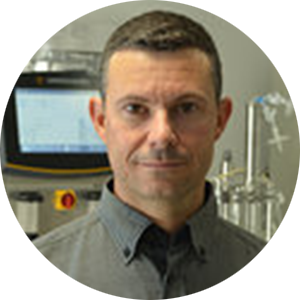 Eduard Ayuso, DVM, PhD, Team Leader, Innovative Vectorology; Scientific Director Translational
Vector Core (CPV), Translational Gene Therapy for Genetic Disorders, Inserm, University of Nantes
Eduard Ayuso, DVM, PhD, Team Leader, Innovative Vectorology; Scientific Director Translational
Vector Core (CPV), Translational Gene Therapy for Genetic Disorders, Inserm, University of Nantes
Our laboratory has been deeply involved in the harmonization of adeno-associated viral vector (AAV) characterization through the international reference standard efforts and has developed novel protocols for accurate titration of these vectors.
Moreover, recent analytical tools based on next generation sequencing technologies, allowed us to identify and quantify residual DNA species in vectors produced in mammalian and insect cells. More recently, we have detected the presence
of miRNA in the final product (i.e. after purification) of AAV vectors. Our examples show that it is crucial to push vector analytics forward to drive innovation in manufacturing processes and vector design.
17:25 The Removal of Virus Related Impurities in Pilot and Manufacturing Scale by Large Scale Ultracentrifugation
 Barbara Kraus, PhD,
Director, Gene Therapy Process Development, Takeda
Barbara Kraus, PhD,
Director, Gene Therapy Process Development, Takeda
The Gene Therapy Center Austria (GTCA) is a CDMO with extensive late stage development & commercialization expertise, including Phase III and commercial manufacturing capabilities. Our AAV platform is available for internal programs as
well as for external partners. This presentation will reveal how efficient and robust the large scale ultracentrifugation removes virus related impurities and thus mainly contributes to high quality gene therapy products for patients with
rare diseases.
17:55 End of Day
18:00 Dinner Short Course Registration
18:30 - 21:00 Recommended Short Course*
SC4: CMC Clinic: Where Am I Now and Where Do I Need to Be with My Dossier
Instructor:
 Christopher Bravery, PhD, Consulting Regulatory Scientist, Consulting
on Advanced Biologicals, Ltd.
Christopher Bravery, PhD, Consulting Regulatory Scientist, Consulting
on Advanced Biologicals, Ltd.
Share your problems at the CMC regulatory clinic, learn how others have addressed them and gain new insights into what regulators are looking for. Puzzled by how to structure your dossier? Unsure if you have enough data for your next clinical
trial application? Wondering how much data will be needed for approval? When does a problem need to be discussed with regulators and how should you approach them?
*Separate registration required.
Thursday, 21 March
8:00 Registration and Morning Coffee
8:25 Chairperson’s Opening Remarks
 Mercedes Segura, PhD, Director, Next Generation Platforms and Technologies,
bluebird bio
Mercedes Segura, PhD, Director, Next Generation Platforms and Technologies,
bluebird bio
8:30 FEATURED PRESENTATION: Challenges in Process Scale Up with 500 L Scale Manufacturing of AAV
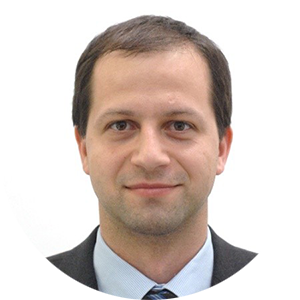 Marian Bendik, PhD, Site Lead Orth, Gene Therapy Center Austria, Biologics Operating
Unit, Technical Operations, Shire
Marian Bendik, PhD, Site Lead Orth, Gene Therapy Center Austria, Biologics Operating
Unit, Technical Operations, Shire
The presentation will provide overview of major manufacturing challenges associated with process scale up of transient HEK293 transfection together with downstream pitfalls. Further, it will sum up 3 years of manufacturing experience in AAV
500 L scale. What are unknown unknowns?
9:00 Process Development Strategies: Academic to CMO vs. Integrated
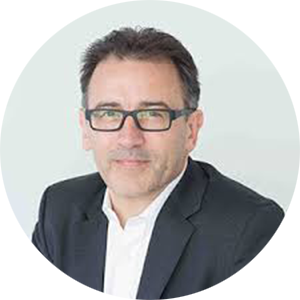 Jean-Philippe Combal, PhD, Co-Founder and CEO, Vivet Therapeutics
Jean-Philippe Combal, PhD, Co-Founder and CEO, Vivet Therapeutics
Vivet Therapeutics is a gene therapy company dedicated to the development of gene therapy treatments for inherited liver disorders with high unmet medical need. The company’s development strategy is to target the liver with a novel synthetic
adeno associated virus (AAV-Anc80) to introduce therapeutic genes to hepatocytes. This presentation will discuss the internal vs. external manufacturing decisions gene therapy companies have to make on the road to commercialization.
 9:30 Providing Tailored Solutions to Turn Ideas into Tomorrow’s Medicines
9:30 Providing Tailored Solutions to Turn Ideas into Tomorrow’s Medicines
 Raquel Fortunato, PhD, CEO, GenIBet Biopharmaceuticals
Raquel Fortunato, PhD, CEO, GenIBet Biopharmaceuticals
GenIbet is a GMP biopharmaceutical CDMO offering highly specialized microbial, cell culture and viral process development and GMP manufacturing services to research groups, biotech and pharma companies. GenIbet mission is to manufacture
safe and reliable breakthrough products to support worldwide customers on building the therapies of the future.
.tmb-90image.jpg?sfvrsn=73891b35_2) 9:45 Advancing Viral Vectors Manufacturing with the Integration of Innovative Technologies: Case Studies
9:45 Advancing Viral Vectors Manufacturing with the Integration of Innovative Technologies: Case Studies
 Anissa Boumlic, PhD, Associate Director Vaccines & Viral Therapies Segment Development, Process Solutions, Life Science, Merck
Anissa Boumlic, PhD, Associate Director Vaccines & Viral Therapies Segment Development, Process Solutions, Life Science, Merck
Gene therapy is gaining momentum and has started to deliver its promise. Nevertheless, there are still challenges in the manufacturing of viral vectors and the need improve scalability, recovery and robustness. Here we described how
implementation of single use and innovations can improve a viral vector process and increase efficiency.
10:00 Process Development Approaches for AAV Gene Therapy Products
Laurence Guianvarc’h, PhD, Head, Upstream Development,Genethon
In recent years, AAV vectors have been increasingly evaluated in various gene therapy clinical trials. To sustain this, reliable, fast, robust, GMP compliant process development strategies are needed. I will present the technologies,
tools and strategies employed during process development and scale up for an internal project.
10:30 Coffee Break in the Exhibit Hall. Last Chance for Poster Viewing.
11:15 Process Development Challenges in Gene Therapy Moving from Early Clinical to Late Phase/Commercial
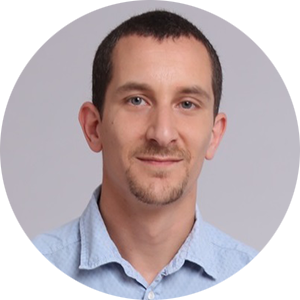 Tarik Senussi, Head, Process Development, Gyroscope Therapeutics
Tarik Senussi, Head, Process Development, Gyroscope Therapeutics
Material to supply initial clinical studies is often delivered via early stage contract manufacturing organisations to clinical phase appropriate regulatory standards. This inevitably requires subsequent modification and transfer to
a facility that can support late stage and commercial manufacture as the product progresses through development. This talk will cover the opportunities and challenges associated with this transition, considering robustness, yield
and comparability.
11:45 Vector Design and Production Scale-Up of AAV- Based Gene Therapies for Inflammatory Disease
 Janneke Meulenberg, PhD, MBA, COO, Arthrogen
Janneke Meulenberg, PhD, MBA, COO, Arthrogen
Arthrogen is developing local gene therapy for inflammatory diseases, using viral mediated gene transfer. Arthrogen’s first product that has been tested in clinical trials, is an AAV5 based vector expressing interferon beta from
an inflammation inducible promoter. This vector was produced using classical plasmid transfection in adherent cells. Arthrogen is currently evaluating different scalable systems for future AAV production runs. The pros and cons
of these systems and the consequences for product characterization and quality control will be discussed.
12:15 Lentiviral Vector Manufacturing - Problem or Not?
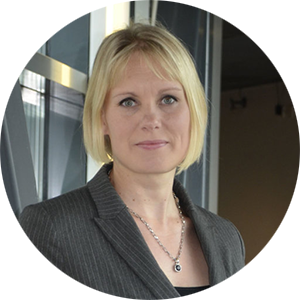 Hanna Lesch, PhD, Director, Gene Therapy Unit, Kuopio Center for Gene and Cell Therapy
Hanna Lesch, PhD, Director, Gene Therapy Unit, Kuopio Center for Gene and Cell Therapy
There are very few lentivirus success stories. Partially that has been explained because of the manufacturing issues. Is it still today a problem or are there solutions available? The talk will cover the main challenges, case study
of process development and scale-up of lentivirus manufacturing into iCELLis500 and will dive into the future visions and possibilities.
12:45 Luncheon Presentation (Sponsorship Opportunity Available) or Enjoy Lunch on Your Own
13:15 Session Break
13:45 Chairperson’s Remarks
Mercedes Segura, PhD, Director, Next Generation Platforms and Technologies, bluebird bio
13:50 Bioprocessing Strategies for Gene Therapies
 Mercedes Segura, PhD, Director, Next Generation Platforms and Technologies,
bluebird bio
Mercedes Segura, PhD, Director, Next Generation Platforms and Technologies,
bluebird bio
Current viral vector manufacturing processes are inefficient and scale-limited, which ultimately results in insufficient manufacturing capacity and high cost. In particular, lentiviral vectors are produced at low yields for short
periods of time and are unstable under standard processing conditions. The challenges and opportunities with lentiviral vector production platforms will be discussed.
14:20 Lentipro Stable Producer Cells for the Development of Scalable Lentiviral Vector Manufacturing
 Ana Sofia Coroadinha, PhD, Lab Head, Health &
Pharma Division, Animal Cell Technology Unit Cell Line Development and Molecular Biotechnology Lab, IBET
Ana Sofia Coroadinha, PhD, Lab Head, Health &
Pharma Division, Animal Cell Technology Unit Cell Line Development and Molecular Biotechnology Lab, IBET
This work discusses the challenges in lentiviral vector manufacture and scale-up as well the strategies and novel technologies to be adopted to enable effective upstream processes. At upstream, many of the challenges are related
to the vector cytotoxicity, restricting the bioreaction to short-term productions. Thus, one of our strategies is to reduce vector cytotoxicity which enabled to establish lentiviral vector producer cell lines constitutively
producing infective virus over 1 week.
14:50 Poster Presentation Session
TBC
15:20 Close of Conference